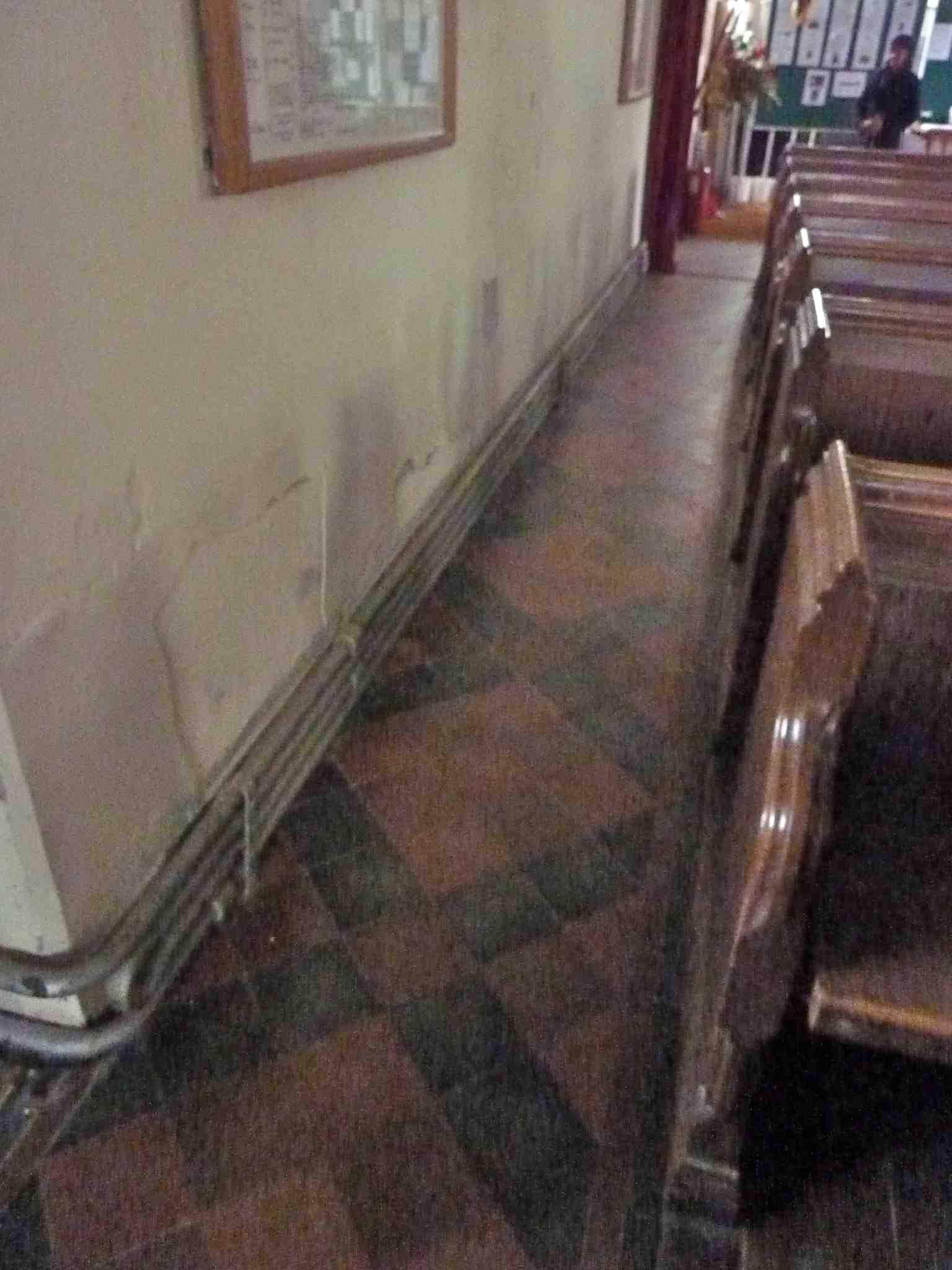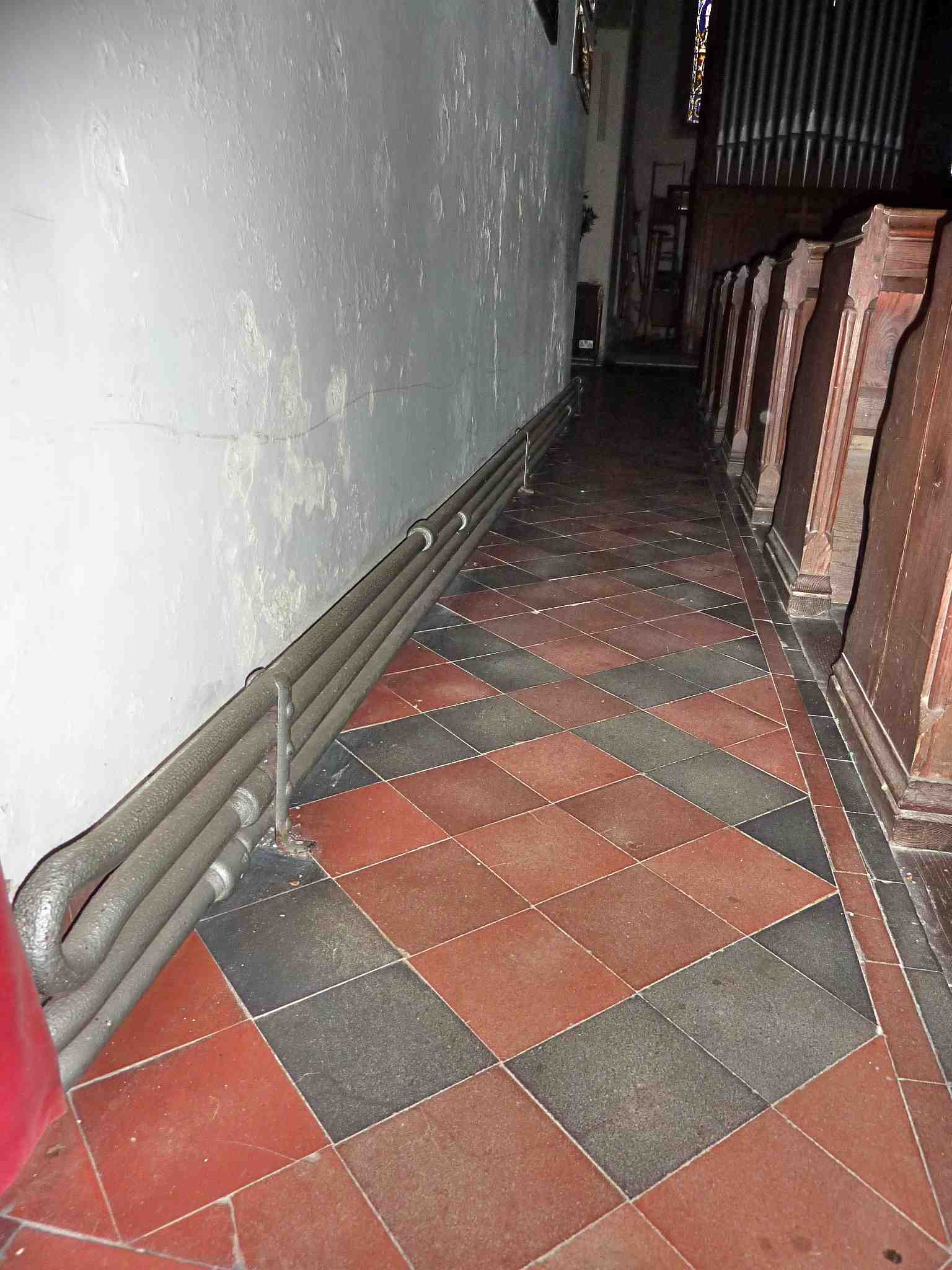
Parish Church of Cornwood Devon St Michael & All Angels |
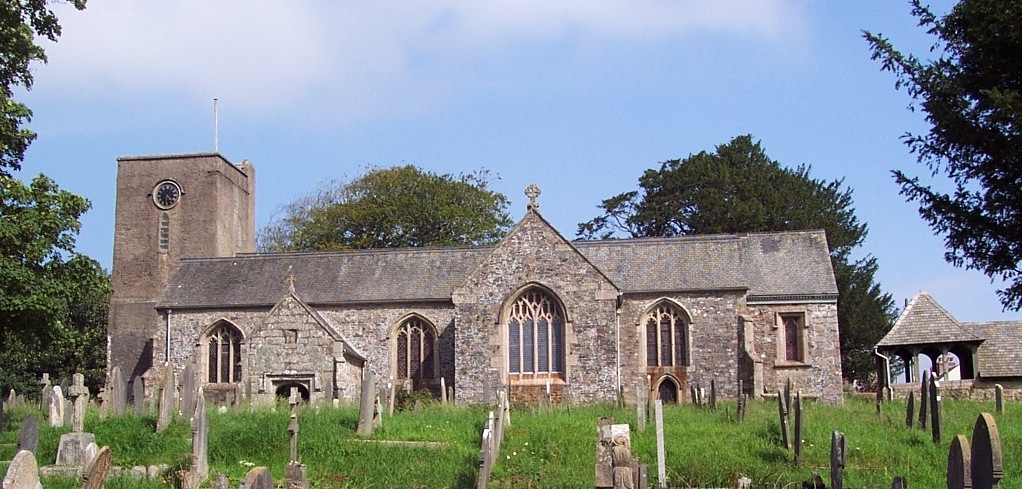
South Elevation & Lynch Gate
|
St
Michael & All Angels the Parish Church of Cornwood
is located on the southern border of the Dartmoor
National Park, and dates from the 14th Century. A
building restoration was carried out during the 1870's
Victorian period, and was reopened in 1882. It must be
assumed that the Perkins HPHW pressurised heating
system was installed during the restoration period.
The name of the firm who installed the system is
unknown.
In common with all Perkins systems the pipework layout was a continuous loop which was then arranged as two circuits, one serving the North side, and the other the South side of the church. 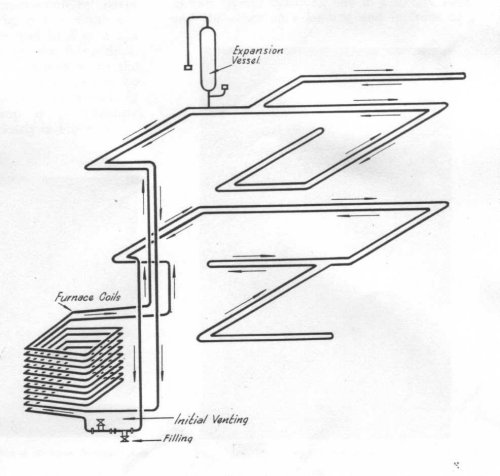  Spiral tube heating
coils and sinuous heating coils were distributed around
the perimeter walls of the Church as can be seen from
the plan layout above.
The lack of knowledge of present day heating firms to understand the basic principles of a Perkins sealed and pressurised heating system is made clear in this installation. Small size air vent cocks have been drilled and tapped into the hydraulic tubing by the firm so that the pipework could be air vented after repairs and alterations were carried out to the pipework to correct a water leak. That these air cocks have had to be fitted in so many places around the pipework shows a disturbing lack of knowledge, and their inability to be able to flush vent a sealed pipework system.
 In the later part of the
20th century the complete furnace, brickwork and heating
coils were removed to provide space for a cast iron
sectional boiler to be installed. At this time
modifications to the plant room pipework and their
extension into the church occured. With this
modification the Perkins system was downgraded to a
conventional low pressure and temperature heating system
with a flow temperature of most likely 80 deg C. It is
not known whether at this stage it was a pumped system
or remained with the original gravity circulation.
Electricity was connected to the church in 1952.
The most recent
modification to the Perkins system occurred circa 2004
when a new cast iron oil fired boiler made by Potterton
was installed. At this time the system was fitted with a
pressurisation unit which sealed and pressurised the
heating pipework system, and in addtion a pipeline
mounted pump was installed.
It is interesting therefore to note how many modifications and/or upgrades during the past 150 years, have been carried out to the original Perkins HPHW system installed in Victorian times, with it now operating as a conventional LTHW wet sealed heating system with new boiler plant, in the 21st century. |

|
There
is evidence in the Church that it had an even earlier
heating system which pre-dated the Perkins system.
There are several floor gratings in the aisles
indicating the existence of a warm air heating system.
This is confirmed and shown by the size of a floor
grating (now covered with coconut matting) in the
south side entrance aisle.
The length of the floor grating indicates that a warm air stove might still be there in the floor pit chamber under the grating. Access to the stove would have been by steps in the chamber leading down from floor level. 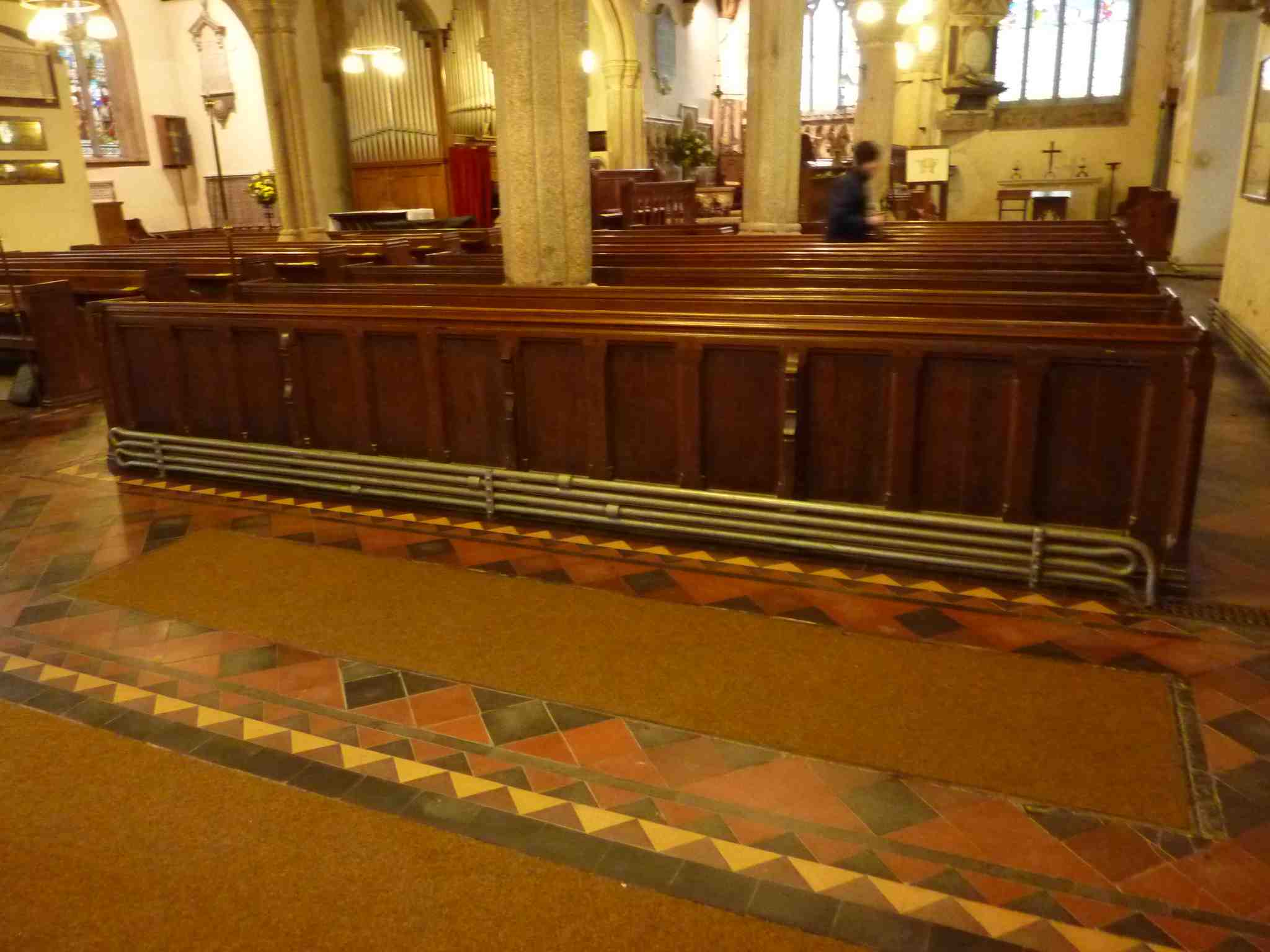 4-tier sinuous coil fitted to back of Pew |
